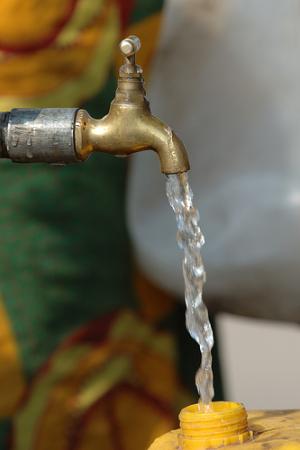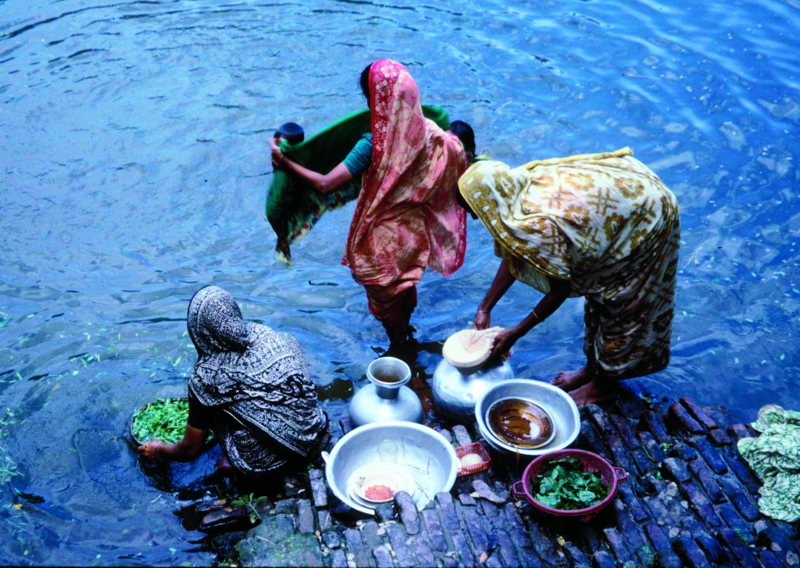
I am going to describe a simple and effective way in which many lives could be saved. It is not complicated or expensive, and only requires a simple, cotton cloth. Once I saw a TED talk by Mallika Sarabhai in which she described, how water could be filtered simply by using 8 layers of used, clean, cotton cloth. This reminded me of a National Geography documentary about the same which I had seen ten years ago. Water filtered this way has the potential to reduce the risk of deadly waterborne diseases. My own experience of using 8 layers of cotton cloth has inspired me to spread awareness about the same.[1][2]
SOURCES OF WATER AND ITS CONTAMINATION:
Water is a vital need for any life form. Some 60% to 70% of the human body is made up of water. Water fit for human consumption is called potable or drinking water. We get water from rivers, wells, lakes, springs, ponds and from rain. However, water from these sources may not be not safe to drink directly because of contamination. Water gets contaminated in various ways. For example: 1. Addition of untreated waste from industries (heat, chemicals, oil, plastic) to water bodies. 2. Use of pesticides in agriculture which affects ground water. 3. Untreated sewage waste, dead animals, waste thrown by humans into rivers and other water bodies. We can make water potable through many methods. To see a chart of contaminants and the causes, symptoms, health effects and treatment of water borne diseases visit: [3][4]
EFFECT OF CONTAMINATED WATER:
The use of contaminated water for drinking or in the preparation of food leads to acute and chronic illnesses. This is a widespread problem and a major cause of death in many countries. Many water borne diseases such as diarrhea, cholera, dysentery and many more are dangerous to life if not treated. It is possible to become immune to the bacteria which cause these diseases by drinking contaminated water. However, bacteria levels rise in the body and these bacteria can pose a threat to life in combination with other infections.[5]
PREVENTION:(making contaminated water drinkable)
There are two stages involved in making contaminated water safe to drink:
- Filtration - removal of undissolved substances; and
- Disinfection.
The cloth filter was developed in response to widespread cholera in Bangladesh, particularly among those unable to boil or otherwise treat their water. Water treated this way has a reduced pathogen count of almost 99%. Even 99% efficacy may not be good enough on its own, but it is better than no treatment at all.
Method:
Take a (preferably) old, thin, clean, white, cotton cloth (old, but clean dhoti or sari can be used) and fold it in half three times to form eight layers. These eight layers have to be close together and tight to be effective. Tie the eight-layered cloth around the tap, or place over the mouth of the water container and collect water.
Clean your hands and the water-containers before collecting water. Keep the containers well covered. After filtering, wash the cloth with detergent or rinse with filtered water and dry it in the sun to disinfect it. Water collected this way must be consumed within two to three days. One must always handle water with clean hands. In fact, hands should not come in direct contact with water.
 The cloth filter is a cost effective and appropriate method for reducing contamination of drinking water. It is easy to maintain and can be used anywhere. Inexpensive cotton cloth or a sari cloth, folded four to eight times, provides a filter of approximately 20 micrometer mesh size. This is small enough to remove all zoo-plankton, most phytoplankton, and all V. cholerae (the germs responsible for cholera) attached to plankton and particulate matter larger than 20 micrometers. When no other option is available, the cloth filter is "better than nothing". Once the water has been filtered, it still needs to be disinfected.
The cloth filter is a cost effective and appropriate method for reducing contamination of drinking water. It is easy to maintain and can be used anywhere. Inexpensive cotton cloth or a sari cloth, folded four to eight times, provides a filter of approximately 20 micrometer mesh size. This is small enough to remove all zoo-plankton, most phytoplankton, and all V. cholerae (the germs responsible for cholera) attached to plankton and particulate matter larger than 20 micrometers. When no other option is available, the cloth filter is "better than nothing". Once the water has been filtered, it still needs to be disinfected.
Disinfection involves removing germs through heat (boiling, exposing bottled water to sunlight for six hours), or by adding chemicals . Eight drops of chlorine per gallon (approximately 4 liters) disinfects water in half an hour. Also, iodine tablets are commercially available, and can be used as per instructions.
Please note, in case of water borne diseases like diarrhea and dysentery, one should mix sugar and salt to water and drink frequently to prevent dehydration. Lack of re-hydration in time is often leads to avoidable fatalities. For more information about the cloth filter method, including a scientific study see : [6][7][8]
I acknowledge Wikipedia from where I got information about water contamination, cotton filter and the images.[9]
I also acknowledge all websites which provide information about this material.
I intend to translate this material into regional languages and spread awareness to rural India with the help of pictures and audio script.
Amrapali Vishwanath.
Date: 18 November 2010.
[2] history of drinking water
[3 water contamination
[4] water pollution
[5] waterborne diseases
[6] scientific study of clothfilter
[7] public health and water by WHO
[8] history of water filters
[9] wikipedia clothfilter